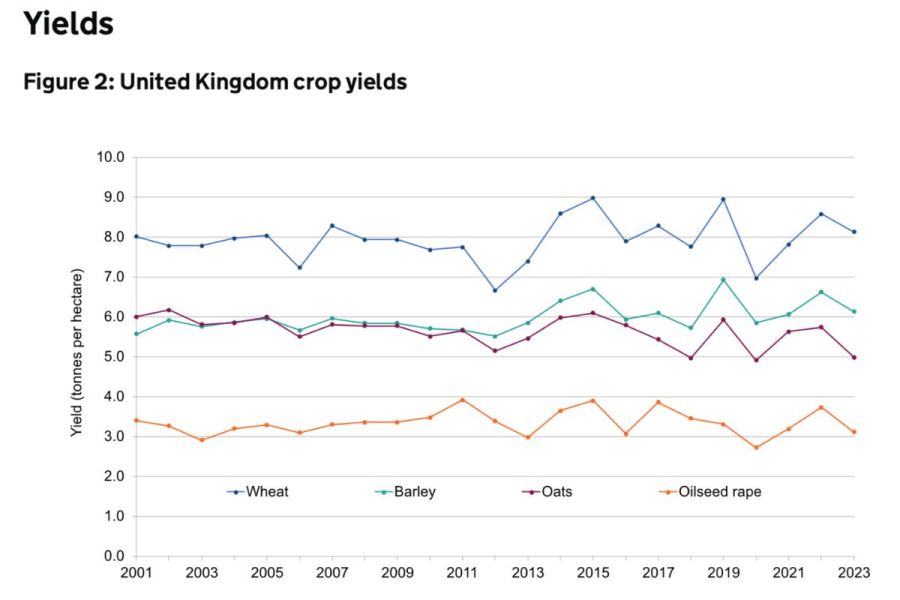By Guy Smith
It’s a pensive moment to be writing in CPM magazine on its 25th birthday – a quarter of a century is a notable passage of time. It used to be the definition of ‘a generation’ which made sense in that 25 was roughly the average age for couples to bring a baby into the world, and thereby start the next generation.
But now as the ‘millennials’ give way to the ‘gen Zs’ in rather quick succession, it seems we get a new generation before the current generation have left school let alone started breeding.
Nonetheless, 25 years is a good moment to mark time and look back as well as forward. When you track yields of UK arable crops during the past 25 years, the line looks remarkably flat with wheat yields consistently hovering around 8t/ha.
In contrast, in the preceding 25 years before that, there was a 30% increase as average yields improved from 5-6t/ha mark in the 1970s. So you could suggest the current generation of UK arable farmers who’ve held the management reins since the millennium, should be known as ‘the flatliners’ whereas their parents could take the label of ‘the improvers’.
The question now is, what will the trend line do during the next 25 years and what’ll be the drivers? One possible scenario may be that due to the sea change in UK agricultural policy, the arable area will shrink back to the best, highest yielding land. And conversely, the more marginal stuff will sit in ag-environment schemes where state payments prove more attractive than growing crops for the market.
This shift would see the yield graph start to climb again pushing up towards the 10t/ha mark, but it wouldn’t see much improvement in overall production. The UK combinable crop harvest has also flatlined at around 22M tonnes during the past 25 years. It seems hard to believe the current policy drive to pay farmers to take land out of arable production won’t reduce the size of the UK harvest.
Of course, policy isn’t the only driver here – price and weather are also key. But what’s notable is that while prices and weather can severely dent or boost the graph line, things seem to even out over time. Having said that, the lines have notably grown bumpier in recent years. Maybe the one thing we can predict for the next 25 years is greater unpredictability in the short-term.
So as we look forward to the year 2050 when thanks to age-reversing medical breakthroughs in the 2030s, nimble and fresh faced 90-year-old farmers will be pictured in CPM walking their crops and chewing the fat with their 80-year-old agronomists – will we still be known as the ‘flatliners’ or will ‘Gen Z’ have seized power and revitalised UK arable agriculture in the way their grandparents did?
If there was one thing I’m sure of here, it’s that farmers will still lack that key management tool which has eluded them for centuries – that being a good crystal ball.
This article was taken from the latest issue of CPM. For more articles like this, subscribe here.
Sign up for Crop Production Magazine’s FREE e-newsletter here.




